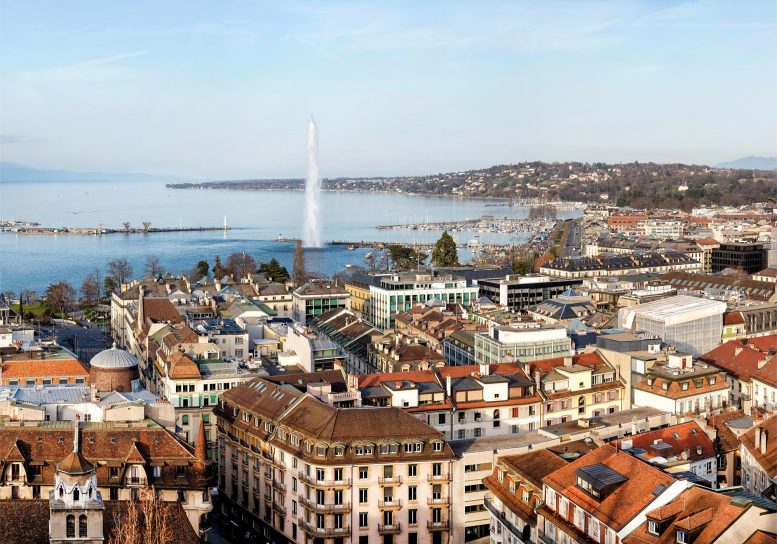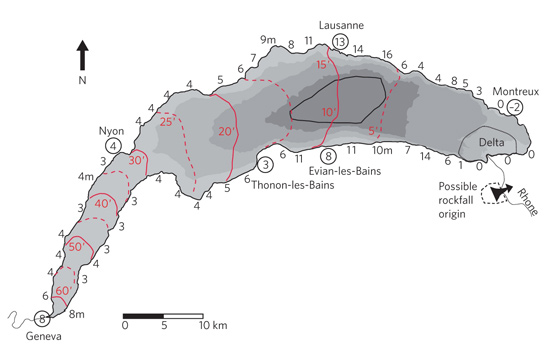
The Swiss city of Geneva could be at risk of flooding should a major rock fall trigger a tsunami on Lake Geneva, as seems to have happened in ad 563.
Over a century after the Romans gave up control of what’s today Geneva, Switzerland, in 563 A.D., a deadly tsunami on Lake Geneva poured over the city’s walls. It originated from a rock fall, near the place where the River Rhône enters the opposite side of the lake. The ensuing tsunami destroyed villages, livestock and killed many people, according to historical accounts.
The scientists published their findings in the journal Nature Geoscience. This could indicate that the region is at risk today since there are about one million inhabitants living on the lake’s shores. This happened before and it will probably happen again, states geologist Guy Simpson, from the University of Geneva, one of the researchers involved in this project.

Simulated tsunami wave height and propagation within Lake Geneva in ad 563, after a rock fall in the Rhône delta area (black dashed line). Black numbers show the varying heights of the first wave in meters; red contours show wave propagation; red numbers show time after the event in minutes; gray shades indicate water depth in 100-meter intervals; black contour highlights the area of deposited sediment. Credit: Nature Geoscience
The team used high-resolution profiles of the sediment composition of the lake, which they gathered using seismic reflection from a ship. The technique is similar to sonar, but uses seismic waves that penetrate and reflect off sediment layers. These profiles showed a layer that had been deposited in a single event. This unusual layer was lens-shaped, averaged 5 meters (16 feet) in thickness, and covered 50 square kilometers (19 square miles).
The 563 A.D. rock fall and tsunami are known as the Tauredunum event, and this layer could be evidence of its actual existence. The deposition happened between 381 and 612 A.D. Since the Tauredunum is the only major natural event described around that time, it seems like a match. The scientists cannot say what exactly created the tsunami, but it’s been proposed that a falling rock caused an accumulated heap of sediment in the Rhône delta to collapse. This could have launched the wave and carried the sediment from the delta to the center of the lake.
Using predictive models, it was possible to estimate that a 13-meter (43-foot) wave hit Lausanne 15 minutes after the rock fall. An 8-meter (26-foot) wave reached Geneva after 70 minutes. Further analysis of the deeper cores will allow the team to learn more about the size and frequency of such events, and whether they were all big enough to generate tsunamis. This could help assess the risk to modern-day Geneva and other lakeside communities.
A survey of the stability of the surrounding slopes and a more refined tsunami model could also help with the risk assessment.
Reference: “Giant Lake Geneva tsunami in AD 563” by Katrina Kremer, Guy Simpson and Stéphanie Girardclos, 28 October 2012, Nature Geoscience.
DOI: 10.1038/ngeo1618









Be the first to comment on "Sediments Suggest Lake Geneva Was Devastated by an Ancient Tsunami"